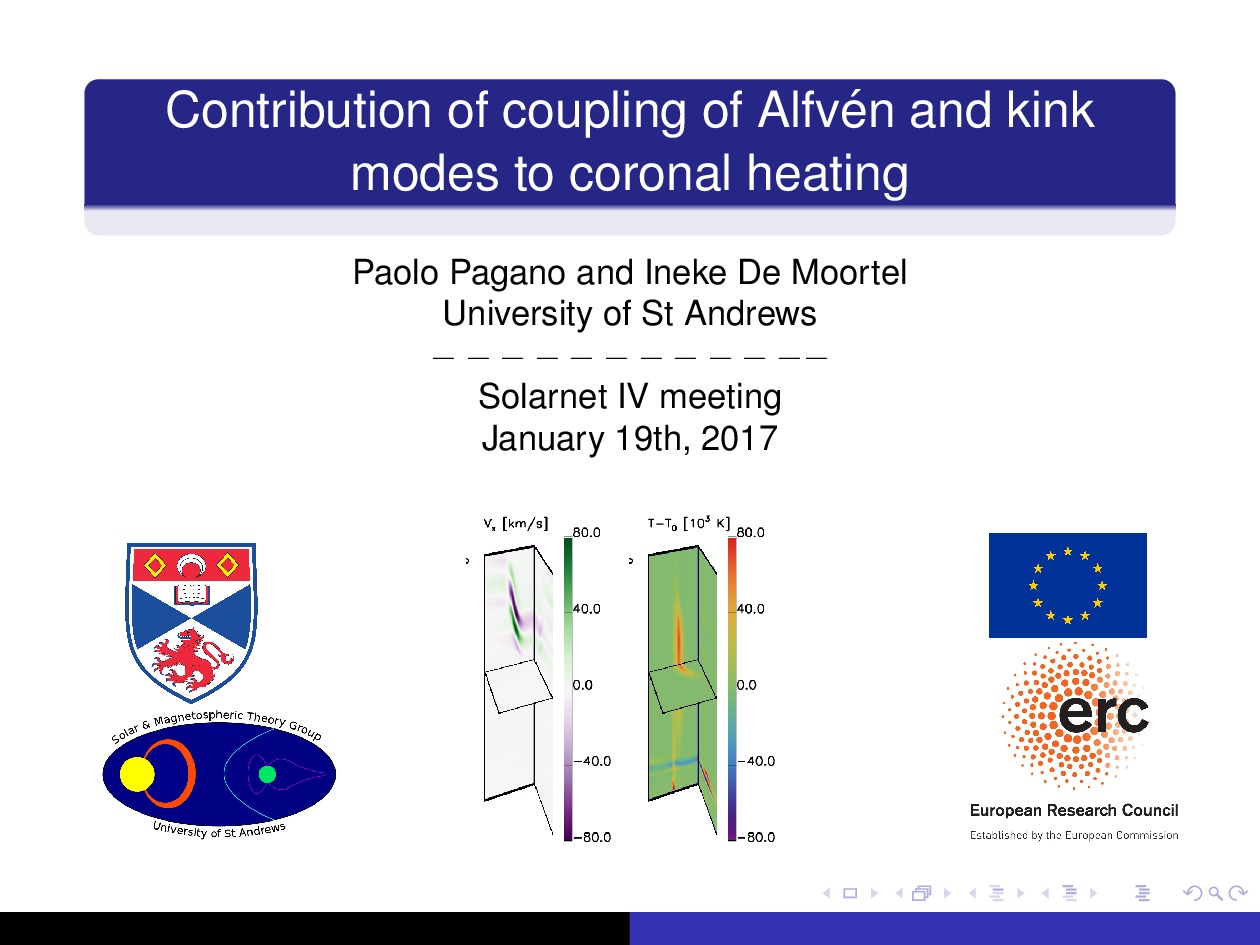Affiliation
University of St Andrews
Main category
Natural Sciences (Astrophysics and Astrononmy)
Abstract
Recent observations of coronal loops reveal ubiquitous transverse velocity perturbations, that undergo strong damping as they propagate. Observational estimates show that these perturbations contain significant amounts of energy. We have previously demonstrated that this observed rapid damping can be understood in terms of coupling of different wave modes in the inhomogeneous boundaries of the loops: this mode coupling leads to the coupling of the transversal (kink) mode to the azimuthal (Alfvén) mode, observed as the decay of the transverse kink oscillations. However, an important point to note here is that (observed) wave damping does not automatically imply dissipation, and hence heating. To investigate under which circumstances this process can contribute to the coronal heating and to what extend the heating rate is sustainable, we perform 3D numerical experiments modelling the observed, transverse oscillations including the effects of resistivity and thermal conduction. We first analyse the contribution from a single monochromatic pulse, and then we extend the study by investigating different sizes and structures of the boundary layer and a continuous driver.
Do you have problems viewing the pdf-file? Download presentation
here
If the presentation contains inappropriate content, please
report the presentation. You will be redirected to the landing page.
